Unsolved Mystery Of The Giant Footprints Outside The Ain Dara Temple
Ellen Lloyd - AncientPages.com - Outside the Ain Dara temple's entrance is a pair of giant footprints. It remains unknown who made them and why they were carved.
Our ancestors' conviction that superhuman beings gigantic in size once roamed the Earth is repeatedly reflected in ancient myths and legends.
Ain Dara, located northwest of Aleppo, Syria, an Iron Age Syro-Hittite temple. Image credit: Institute for the Study of the Ancient World Contact - CC BY 2.0
The once magnificent Ain Dara temple, or what's left, first attracted attention in 1955 when a monumental basalt lion was accidentally discovered.
If we travel to the village of Ain Dara, northwest of Aleppo, Syria, we come across an Iron-Age temple. The temple was later excavated between 1980 and 1985 and has often been compared to King Solomon's Temple.
As the Bible History Daily states, "the similarities between the 'Ain Dara temple and the temple described in the Bible are striking. Both buildings were erected on massive artificial platforms at the highest point in their respective cities.
The buildings likewise have similar tripartite plans: an entry porch supported by two columns, the main sanctuary hall (the hall of the 'Ain Dara temple is divided between an antechamber and the main chamber), and then, behind a partition, an elevated shrine, or Holy of Holies.
Colossal basalt lion found in 1955. (Ain Dara, Syria). Image credit: Materialscientist - CC BY 2.0
They were also both flanked on three of their sides by a series of multistoried rooms and chambers that served various functions."
However, although the Ain Dara temple shares many features with King Solomon's temple, it's unlikely it was the same building.
According to the excavator, Ali Abu Assaf, the Ain Dara temple existed for 550 years, from about 1300 BC. to 740 BC.
Archaeologists still cannot agree on the deity to whom the temple was dedicated. Some believe that it was dedicated to Ishtar, the goddess of fertility. Others suggest that it was the goddess Astarte, owner of the sanctuary. Yet, another group means it is likely that the temple holder was the god Baal Hadad.
The Ain Dara temple has several beautifully preserved structural features, including limestone foundations and blocks of basalt.
Reconstructed wall of Ain Dara Temple with cherubim relief in lower panel. Image credit: Odilia - CC BY-SA 3.0
Originally the building also had mudbrick covered with wood paneling, but today it's unfortunately lost.
The facade and interior walls are enlivened by hundreds of finely carved reliefs depicting lions, cherubim, mythical creatures, mountain gods, palmettes, and ornate geometric designs.
A pair of carved giant footprints are at the threshold of the entrance of the Ain Dara temple. They are about one meter long and face toward the temple's interior.
Like Solomon's Temple, the 'Ain Dara temple was approached by a courtyard paved with flagstones. The left footprint was carved on the flagstone, indicating that the god was entering the temple. The right impression was carved at the threshold to the cella, telling that the giant god needed only two steps to enter the temple.
Giant footprints outside the Ain Dara Temple. Credit: Verity Cridland - CC BY 2.0
The distance between the two single footprints is about 30 feet.
A stride of 30 feet would belong to a person (or goddess) about 65 feet tall. The temple is large enough for the god to enter and dwell in.
However, they were unlikely left by a being that entered the temple. The giant footprints remain an unsolved puzzle.
Scholars do not know why they were carved and what purpose they served. Some scientists have suggested that footprints can be designed to recall the presence of the gods, a sort of iconic representation of the deity. Although this is not a genuine pair of giant footprints, the carving is real, and it suggests our ancestors were familiar with and witnessed beings of gigantic size. Another possibility is that the huge footprints have a symbolic meaning.
Written by - Ellen Lloyd – AncientPages.com
Updated on April 2, 2023
Copyright © AncientPages.com All rights reserved. This material may not be published, broadcast, rewritten or redistributed in whole or part without the express written permission of AncientPages.com
More From Ancient Pages
-
 Egyptian Priest Sonchis Of Sais And His Story About Atlantis – Were The Shemsu Hor Survivors Of A Great Catastrophe That Ended The Ice Age?
Civilizations | Jun 8, 2017
Egyptian Priest Sonchis Of Sais And His Story About Atlantis – Were The Shemsu Hor Survivors Of A Great Catastrophe That Ended The Ice Age?
Civilizations | Jun 8, 2017 -
 Problems With The Age Of Man And Theory Of Evolution – What Happened In The Past?
Featured Stories | Oct 11, 2021
Problems With The Age Of Man And Theory Of Evolution – What Happened In The Past?
Featured Stories | Oct 11, 2021 -
 Ancient Egyptians Invented Toothpaste
Ancient Technology | Dec 26, 2015
Ancient Egyptians Invented Toothpaste
Ancient Technology | Dec 26, 2015 -
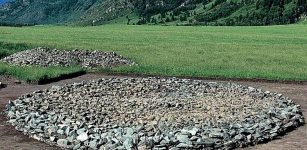 Headless remains related to Huns or Sarmatians puzzle archaeologists in Kazakhstan
News | Aug 30, 2015
Headless remains related to Huns or Sarmatians puzzle archaeologists in Kazakhstan
News | Aug 30, 2015 -
 Unearthing South Australia’s Oldest Known Shipwreck: The Bark South Australian (1837)
Archaeology | Aug 16, 2023
Unearthing South Australia’s Oldest Known Shipwreck: The Bark South Australian (1837)
Archaeology | Aug 16, 2023 -
 Native Americans And European Legends Tell Peculiar Beings From The Sky Still Live On The Earth
Featured Stories | May 16, 2018
Native Americans And European Legends Tell Peculiar Beings From The Sky Still Live On The Earth
Featured Stories | May 16, 2018 -
 Legend Of Jin Chan: The ‘Golden Toad’ – Money Frog That Brings Luck And Is A Feng Shui Charm
Chinese Mythology | May 5, 2016
Legend Of Jin Chan: The ‘Golden Toad’ – Money Frog That Brings Luck And Is A Feng Shui Charm
Chinese Mythology | May 5, 2016 -
 Ancient Biblical Manuscript M.910 We Are Afraid To Open May Contain A Surprise
Archaeology | Feb 19, 2018
Ancient Biblical Manuscript M.910 We Are Afraid To Open May Contain A Surprise
Archaeology | Feb 19, 2018 -
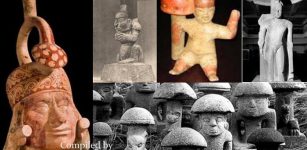 Mysterious Ancient Mushrooms In Myths And Legends: Sacred, Feared And Worshiped Among Ancient Civilizations
Featured Stories | Apr 26, 2023
Mysterious Ancient Mushrooms In Myths And Legends: Sacred, Feared And Worshiped Among Ancient Civilizations
Featured Stories | Apr 26, 2023 -
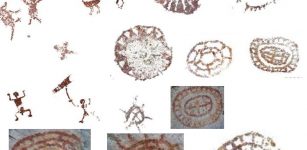 Large Collection Of At Least 2,500-Year-Old Cave Paintings Discovered In Indonesia
Archaeology | Dec 17, 2017
Large Collection Of At Least 2,500-Year-Old Cave Paintings Discovered In Indonesia
Archaeology | Dec 17, 2017 -
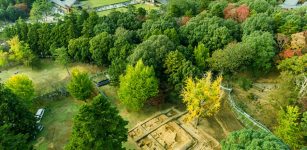 Impressive Ruins Of 13th Century Pagoda Remains Discovered At Nara’s Todaiji Temple, Japan
Archaeology | Dec 12, 2015
Impressive Ruins Of 13th Century Pagoda Remains Discovered At Nara’s Todaiji Temple, Japan
Archaeology | Dec 12, 2015 -
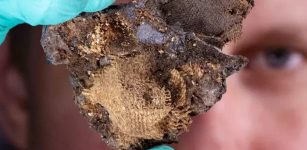 Little-Known Mummy Fragments Analyzed By Scientists
Archaeology | Jan 3, 2024
Little-Known Mummy Fragments Analyzed By Scientists
Archaeology | Jan 3, 2024 -
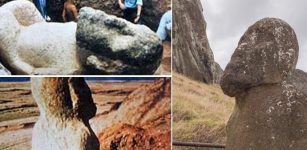 Unusual Tukuturi Statue On Easter Island Remains An Unexplained Mystery
Civilizations | Jan 16, 2019
Unusual Tukuturi Statue On Easter Island Remains An Unexplained Mystery
Civilizations | Jan 16, 2019 -
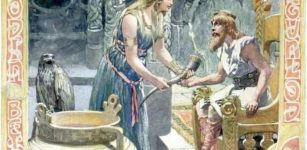 Death Of Kvasir And How Famous Mead Of Poetry Was Created, Stolen And Finally Recovered By Odin
Featured Stories | Apr 14, 2018
Death Of Kvasir And How Famous Mead Of Poetry Was Created, Stolen And Finally Recovered By Odin
Featured Stories | Apr 14, 2018 -
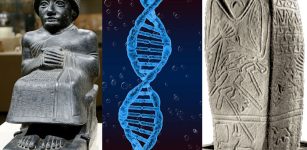 Ancient DNA Provides Comprehensive Genomic History Of The “Cradle Of Civilization”
Archaeology | Oct 10, 2022
Ancient DNA Provides Comprehensive Genomic History Of The “Cradle Of Civilization”
Archaeology | Oct 10, 2022 -
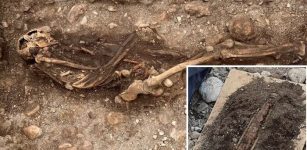 Unusual Iron Age Burial With Warrior And Sword Discovered On Gotland, Sweden – Was He From The Roman Empire?
Archaeology | Sep 7, 2021
Unusual Iron Age Burial With Warrior And Sword Discovered On Gotland, Sweden – Was He From The Roman Empire?
Archaeology | Sep 7, 2021 -
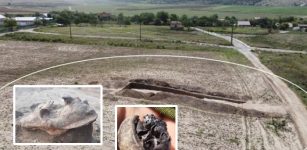 Archaeologists Make An Unusual Find In A 2,000-Year-Old Romanian Burial Mound
Archaeology | Jul 12, 2023
Archaeologists Make An Unusual Find In A 2,000-Year-Old Romanian Burial Mound
Archaeology | Jul 12, 2023 -
 Archaeologists unearthed artifacts in a 3,700 year-old mine factory
Artifacts | Aug 22, 2015
Archaeologists unearthed artifacts in a 3,700 year-old mine factory
Artifacts | Aug 22, 2015 -
 Sacred Number Four – Perfect Number And Deep Meaning Behind It
Ancient Symbols | Nov 7, 2017
Sacred Number Four – Perfect Number And Deep Meaning Behind It
Ancient Symbols | Nov 7, 2017 -
 Varangian Guard: Professional Viking Warriors Highly Valued For Courage, Loyalty, Discipline And Fighting Skills
Featured Stories | Jun 4, 2017
Varangian Guard: Professional Viking Warriors Highly Valued For Courage, Loyalty, Discipline And Fighting Skills
Featured Stories | Jun 4, 2017




